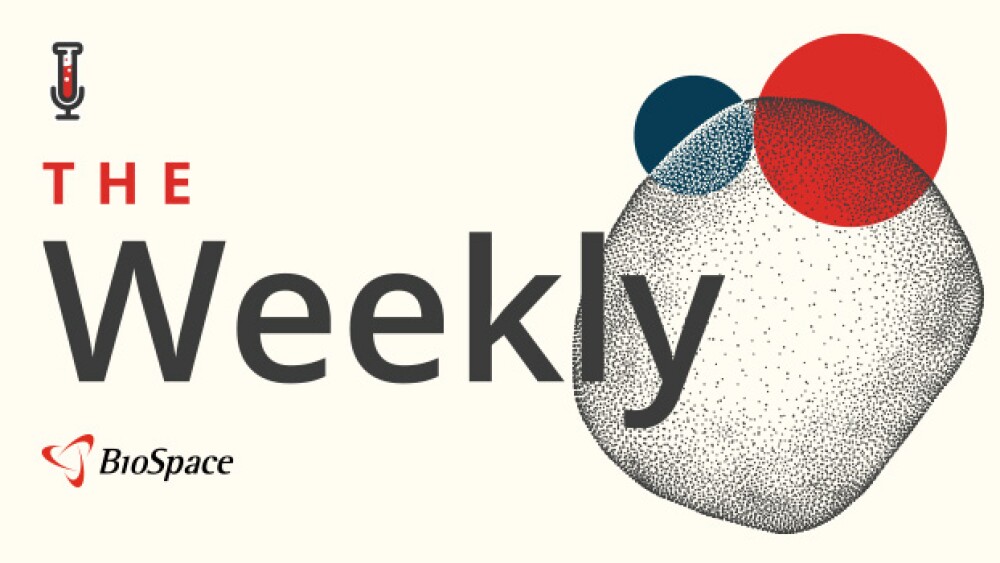Just a few months after Vir Biotechnology lost an emergency authorization for its COVID-19 antibody, Marianne de Backer stepped in as CEO to answer a critical question: What’s next?
Vir Biotechnology had a meteoric rise during the COVID-19 pandemic, developing the monoclonal antibody sotrovimab with GSK. The drug was granted emergency use authorization by the FDA in December 2021 to treat mild to moderate COVID. As fast as the opportunity to fight the global scourge arrived, it ended. The authorization was revoked a year later and Vir was left soul searching.
Enter Marianne de Backer in April 2023.
“As I came in as the CEO about 20 months ago, I was looking at exactly that question, right? What’s going to be next for Vir beyond the COVID success,” de Backer explained in a sunny San Francisco hotel room during the J.P. Morgan Healthcare Conference in January. “I really went back to what . . . Vir was really, really good at, and that is a deep understanding of how the immune system works.”
While the biotech’s work had focused on fighting viruses, its technology also could be applied more broadly to the immune system, and cancer in particular. Vir signed a deal with Sanofi in August 2024 to bring in three masked T cell engagers, which also included about 50 people well versed in what the assets could do, de Backer said.
“That was a great fit for our company to build the Vir of the future,” the CEO said.
Unfortunately, Vir had to streamline in the background to make way for the new focus. De Backer said it cut headcount by 200 people—or about 25% of staff at the time—while pulling the plug on programs in COVID-19 and influenza and the overall T cell–based viral vector platform. The company also “rationalized the footprint,” de Backer added, closing three sites while keeping the headquarters in San Francisco and a research site in Bellinzona, Switzerland.
De Backer has also rebuilt her management team, bringing on Jason O’Byrne as CFO, Mark Eisner as chief medical officer and Jennifer Towne as chief scientific officer, among others, since taking over as CEO.
Heading into JPM week this year, nearly two years into her tenure at Vir, de Backer was in a great mood, with data in hand to prove that it’s all been worth it.
“It was a very heavy lift, but we’re now at a point where we’re ready to show the world the turnaround of Vir,” de Backer said.
Vir Steers Into Cancer
Reflecting on the Sanofi deal, de Backer said the opportunity dropped into her hands at the perfect moment. Vir had been looking at other options in the same space.
“Sanofi had decided that strategically, they wanted to get out of a number of early-stage oncology opportunities,” de Backer said. The bigger company shifted toward bulking up its Dupixent franchise with an increased focus on immunology and inflammation. The T cell enngagers were then deprioritized. “As soon as I became aware of that, we started doing due diligence.”
De Backer’s interest stems from the fact that all the targets of the medicines are biologically validated, with “compelling” preclinical data, she explained. Sanofi’s Altuviiio is also already on the market for hemophilia and uses the same masking technology as the T cell engagers. That meant the masking technology had already been deemed safe. In addition to securing the three specific assets, Vir obtained the rights to the platform to explore future targets in oncology.
“It was a pretty unique deal,” de Backer said. “It was almost like an acquisition, right? Even though it’s not called an acquisition, but it had all the elements.”
Proof of Concept Arrives
Heading into J.P. Morgan, Vir gave a first look at a small dataset from the Sanofi assets, now called VIR-5818 and VIR-5500. In a Phase I test in solid tumors, half of the 20 patients with HER2-expressing cancers who received VIR-5818 experienced tumor shrinkage. There were confirmed partial responses in two out of six patients who had HER2-positive colorectal cancer.
For VIR-5500, all of the 12 patients with metastatic castration-resistant prostate cancer who received the drug saw declines in prostate-specific antigen (PSA), a biomarker for prostate cancer. PSA response was confirmed in seven of these individuals, Vir said.
Vir heralded the early readout as proof of concept for the assets. The third asset, VIR-5525 for EGFR tumors, is expected to hit the clinic in the first half of this year.
The data impressed analysts from H.C. Wainwright, who said in a late January note to clients that Vir’s pipeline is beginning to show signs of differentiation in the immune-oncology space.
“While still early-stage, we believe the oncology pipeline is an underappreciated asset in Vir’s portfolio, with potential for long-term value creation,” H.C. Wainwright’s Patrick Trucchio said.
Full Speed Ahead
Vir started the year with about $1.1 billion in cash and investments on hand, paving a runway into mid-2027. De Backer would not say if there are more layoffs to be done, but said the company now sits at about 430 full-time equivalents, who will be focused on the clinical pipeline.
As for de Backer, she has a busy year of clinical execution and dealmaking ahead of her, as evidenced by the jam-packed schedule. “It’s going to be no rest for the wicked,” she joked as she flashed BioSpace a copy of her schedule. She said the company was experiencing “tremendous interest” from investors and meetings to discuss business development.
In addition to its newfound cancer assets, Vir’s work in hepatitis B and delta (D) has continued. The company will move the hepatitis D program into three registrational trials this year, which de Backer called “a core priority,” even after the shift away from viral infections. Phase II data presented last year showed high rates of viral suppression, Trucchio noted.
Meanwhile, Vir will seek a partner for the Phase II hepatitis B program and a preclinical HIV program. Trucchio said the hepatitis B program is “poised for global leadership” and could represent a functional cure for the stubborn disease. The market for treatments could reach $450 billion to $500 billion, he estimated.
“Hepatitis delta is an orphan disease, so that is something that, from the size of the trials, and also from a commercial perspective, is very manageable,” de Backer explained. “Hepatitis B is a much bigger opportunity and also requires much bigger and very expensive trials. So this is a typical opportunity where collaborating with a large pharma partner will be beneficial for us to create optimal value.”






